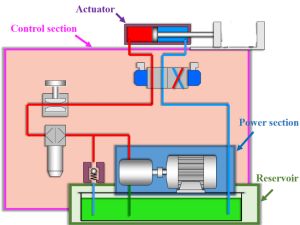Introduction
When it comes to choosing the right drivetrain for your vehicle, one crucial decision to make is whether to opt for a transaxle or a traditional transmission system. In this article, we will delve into the details of transaxles and explore their advantages and disadvantages. But first, let’s define what a transaxle is.
What is a Transaxle?
A transaxle is a specific type of automotive transmission system that combines the functions of a transmission and a differential into one integrated unit. Unlike traditional transmissions, which are usually separate from the differential, a transaxle is positioned at the front of the vehicle, directly connected to the engine.
Advantages of Transaxles
1. Efficiency
Transaxles are known for their high efficiency. They transmit power from the engine to the wheels with minimal energy loss. This efficiency can result in better fuel economy, which is especially important in today’s environmentally conscious automotive industry.
2. Cost Savings
In terms of cost, transaxles can be more economical than traditional transmissions. They have fewer components and are easier to manufacture, leading to lower production costs. This cost-saving aspect can also translate into more affordable vehicles for consumers.
3. Compact Design
Transaxles have a compact design that allows for better space utilization within the vehicle. This can be particularly advantageous in smaller cars where maximizing interior space is crucial. Additionally, the compact size of the transaxle can contribute to improved weight distribution and handling.
4. Longevity
Transaxles are designed for durability and longevity. With proper maintenance, they can have a longer lifespan than traditional transmissions, reducing the need for frequent replacements.
5. Performance
Many high-performance vehicles utilize transaxles because of their ability to distribute power evenly to the wheels. This results in better traction and handling, which is essential for sports cars and racing vehicles.
Disadvantages of Transaxles
1. Limited Power Handling
While transaxles are suitable for most passenger vehicles, they may not be the best choice for heavy-duty applications or high-torque engines. Traditional transmissions tend to have higher power-handling capabilities in such scenarios.
2. Cost of Repairs
Though transaxles are cost-effective during manufacturing, repairs and replacements can be more expensive compared to traditional transmissions. This is partly due to the integrated nature of the transaxle, which may require more labor and expertise to service.
3. Reduced Versatility
Transaxles may not be as versatile as traditional transmissions when it comes to customization. Enthusiasts who like to modify their vehicles for specific purposes may find traditional transmissions more accommodating.
4. Maintenance Complexity
While transaxles are generally durable, they can be more complex to maintain and repair. Specialized knowledge and tools may be required, increasing maintenance costs for some vehicle owners.
Conclusion
In conclusion, transaxles offer numerous advantages, including efficiency, cost savings, a compact design, longevity, and enhanced performance. However, they may not be the ideal choice for heavy-duty applications, and their repair costs can be relatively high. When deciding whether a transaxle is better for your vehicle, it’s essential to consider your specific needs, budget, and intended use. For more information on the advantages of transaxles, you can visit this resource.

